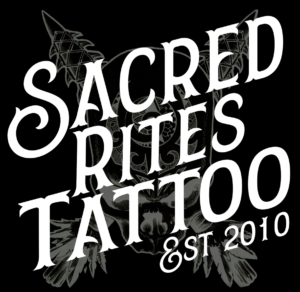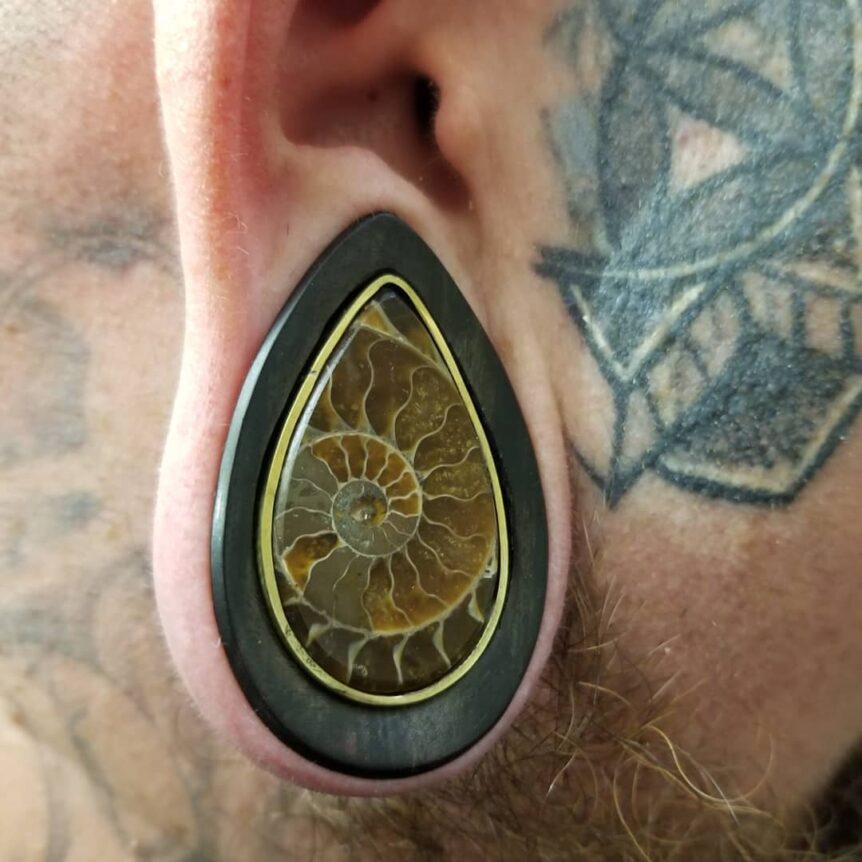So, you’ve decided you want to stretch your ears. Well, we are here to help!
You’ve probably noticed over the years stretched ears are becoming more and more common.
The process has actually been around much longer than most people realize. Since the earliest recorded human history in fact. Aside from the obviously aesthetic look, there’s always been a much deeper meaning to the process. Hopefully after reading all this, you’ll have a renewed appreciation and understanding of the process!
Stretching has been practiced cross culturally throughout history. Indigenous peoples in north America, European pagans, early Christians, Siberian nomads and Egyptian pharos. The oldest mummy on earth was discovered wearing 8mm lobe piercings. So, we are basically keeping an ancient tradition alive! Kinda cool right?
This process should be taken slowly. It’s very much about the journey, not the destination. Taking your time and listening to your body is not just the healthy way to go about it, but it’s also about respecting your body. Each stretch is a rite of passage. A new stage of our lives or being able to appreciate a bigger awareness.
Gaining knowledge by opening your ears and closing your mouth is how a lot of cultures viewed who was gaining wisdom in their community. Those who were considered the wisest had the largest and healthiest ears.
Stretching too quickly or incorrectly was a sign of impatience and being uneducated. It was obvious to those around you that you were not willing to educate yourself and appreciate the process and the journey. Taking your time and learning patience and respect for your body is important. It shows you have wisdom. It shows you have respect for your body and the path stretching will take you down. Not just stretching but in all walks of life.
So now that you’ve had your history lesson let’s move on!
Where should you start?
This answer will vary depending on each individual. A skilled piercer can do an initial lobe piercing up to a 2g depending on your anatomy and any previous piercings or scar tissue that may be present.
Typically, most standard lobes are done at 18g or 20g. A lot of the times when your ears are done at a much smaller gauge it’s very easy to start the process of stretching. Typically, a 16g or 14g will slide right in. From there it’s a matter of choosing the proper jewelry and moving along slowly.
Tapering:
Our previous blog post was all about tapers! Did you read it? You should. We don’t want to beat a dead horse but it’s worth mentioning again. Tapers were designed to help piercers install jewelry. Tapering is NOT a good way to go about stretching!!! More specifically buying tapers from retail outlets is an incredibly bad idea. They are short and don’t offer the proper length for a smooth insertion. They are also not meant to be worn around. When you see someone walking around with hot topic tapers in their ears you can rest assured, they are in for quite a few problems along the way!
We understand the need and want for instant gratification but rushing the process or using improper methods will damage your lobes. Period.
Blow outs, tearing, thin spots, the inability to go further in size are just a few examples of why you SHOULD TAKE YOUR TIME. Skipping sizes and such is a bad idea. Slow and steady wins the race!
Stretching Naturally:
Stretching Naturally is hands down the safest method to stretch your ears.
You may be wondering what we mean by natural… We mean your body will naturally stretch and the channel will enlarge all on its own. No tools needed!
After your initial piercing heals your body develops a fistula, a skin tube of scar tissue that heals around the jewelry. In the early stages this tissue is super dense and not pliable. In time that tissue will mature and become soft and flexible. When the tissue is ready, you can go up a size and the process will repeat itself. The skin will tighten and become tough but once again over time will become soft and more manageable. Rinse and repeat until you reach your goals. The process of stretching is really that simple! Time and patience!
Time between stretching:
Remember how we said don’t rush? Sloooow down!
The time between stretches is absolutely crucial for a healthy stretch. Now we all heal differently and have different life styles. It’s not an exact science. 6 weeks is the absolute minimum you should wait. But again, everyone is different some people may need 12 weeks or even longer.
To help you better understand how your body works let’s break it down. Our skin is made of 5 very distinct layers. Most importantly is the 5th layer. The Stratum Basale. This layer provides our body with all of its new skin cells. This means it’s responsible for the amount of healthy skin we have to stretch! (Super important) It’s important to remember when you stretch a piercing, you’re not just stretching the fistula or the visible skin you are displacing all the layers along with them. That 5th layer allows us to continue to stretch and not rip our lobes and provides us with more fresh skin to go bigger and bigger. Every wonder how someone could have holes in their ears the size of a coke can? That’s the magic of the human body. The time frame we allot between stretching allows the collagen the time it needs to regenerate. Collagen is what makes your skin elastic and stretchy. It also gives the body time to replenish lipids to fill in the gaps and allow that tissue to relax.
When we say listen to your body this is what we mean. Because the healing time varies you alone will know how your ears feel and when they are ready!
If you’ve seen someone with larger jewelry in a piercing you’ve probably asked them the infamous question “Did that hurt” or… On the other side of the spectrum if you have larger gauge piercings you’ve certainly been asked. The answer should be NO! The initial piercing may cause some pain or discomfort. But! The process of stretching your ears should not be painful. If it hurts, if it bleeds, if there’s severe discomfort then you are moving too fast! Again. Slow down!!!
Jewelry safe for stretching:
Steel that is ASTM F138 compliant or ISO 5832-1 compliant
Titanium (Ti6Al4V ELI) that is ASTM F136 compliant or ISO 5832-3 compliant
Titanium that is ASTM F67 compliant
Solid 14 karat or higher nickel-free white, rose, or yellow gold
Solid nickel-free platinum alloy
Niobium (Nb)
Fused quartz glass, lead-free borosilicate or lead-free soda-lime glass
Low Porosity Stones such as Amethyst, Agate, Quartz, Onyx, and properly finished Jade, Tigers Eye, and Howlite.
During the stretching process you can develop little micro tears, they may not always be visible but It’s important you don’t wear any porous materials until your ears are fully healed. When the piercing is fully healed and healthy you can wear a very large variety of jewelry. The above is simply to move up a size. You should always use single flare jewelry when sizing up. If you try and force a flare through a fresh piercing or even a healed piercing while attempting to stretch there’s a good chance you’ll tear or blow out your lobes.
When it comes to buying jewelry, it can get very confusing. Typically, you don’t want to jump more than 1mm at a time. Unfortunately, sizes do vary from company to company and material. Perfect example is some companies make 00g at a 9mm and some make it at 10mm. That difference can be the difference between a healthy stretch and a tear. Seek professional help when it’s time to stretch your ears. Professionals have the equipment and knowledge to make sure you get exactly what you need for a safe experience!
Maintenance and preparation:
Your ears need love too! When they are not feeling tender or sore pop out your jewelry and give them some much needed love!!
A light massage with your fingers will help promote blood flow and the growth of healthy tissue! You can also use vitamin e oil, jojoba oil, coconut oil or a simple lotion. Just be careful if you have any allergies!
Tape:
There are a lot of mixed opinions when it comes to tape. Some people recommend wrapping your jewelry in layers of tape to slowly increase the size. This can be affective for some but we really don’t recommend this method. There is no safe tape that we know of that can be worn inside the human body. Tape can collect dead skin cells and oils and can get funky really quickly. There’s also a size issue. There’s no way to really ensure the thickness of each layer. Using improper techniques can cause irritation, blowouts, tears and all kinds of issues.
Ear weights:
Again, there is a lot of controversy on this. Wearing heavier jewelry can absolutely aid in the stretching process. Gravity can be your friend! The issue is if you want to move the process along, you want a good quality stone or some type of heavy captive or circular barbell. Hanging pad locks on your ears is a terrible idea. You’ll thin out the skin and make future stretching almost impossible not to mention the risk of tearing or flat out ripping your lobes.
When you see decorative ear weights, they are more for people who have already stretched their lobes and have healthy healed fistulas. The weights are decorative and not as heavy as they look!
At the end of the day your best bet is the natural method. Let your body do its thing and be patient! Seeking professional help and advice is always recommended.

